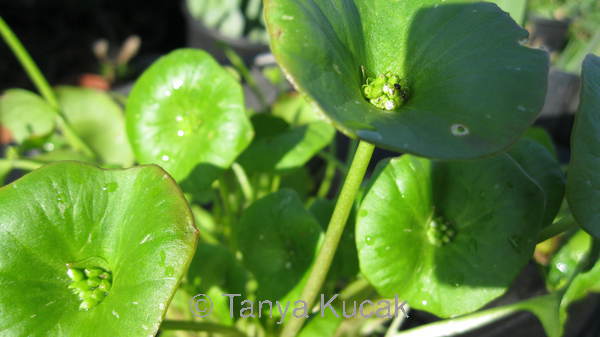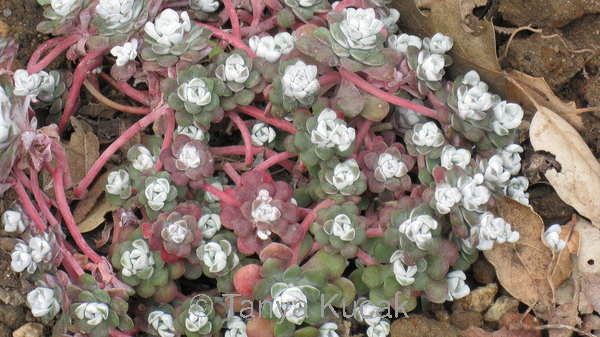
Did you ever think of combining the nuts of the California bay tree with chocolate, or making gingersnaps with the native wild ginger (which is not related to culinary ginger)? Ellen Zachos did, and these are a couple of her favorite foraged foods.
A gardener by profession and a forager by nature, Zachos enjoys the thrill of getting free food and finding interesting flavors. But rather than going out in the wild to collect plants, she suggests starting in your own backyard.
At the San Francisco Flower and Garden Show this year, she talked about some of the plants featured in her book Backyard Foraging: 65 Familiar Plants You Didn't Know You Could Eat (Storey Publishing, 2013).
Serviceberry or Juneberry (Amelanchier sp.) is one of her favorite berries and landscape plants. She grows it in a container in her New York garden, and delights in the fall color and the flowers that appear before it leafs out. The fruit is slightly larger than a blueberry and the flavor is between a blueberry and strawberry, with a touch of almond, Zachos said.
I've found fruit from the strawberry tree (Arbutus unedo) bland, but Zachos said you have to know how to eat it. It's not ripe until it falls from the tree! She freezes the fruit, and when she's collected enough she runs it through a food mill to make jam, jelly, or – her favorite – fruit leather.
I was surprised to find wild ginger (Asarum caudatum) is one of the most delicious plants. The edible part is the stolons that run between clumps of plants, harvested in late fall or early spring. The clumps are replanted after harvesting stolons. Zachos describes the flavor as strong, spicy, dark, and complex. It's wonderful with sweet and savory dishes. She makes Wild Gingersnaps that are scintillating, unusual, and taste like champagne.
Miner's lettuce is worth a trip to California when it's in season, Zachos said. She likes this crunchy, mild green raw in a lightly dressed salad.
Acorns from oak trees are a wonderful staple food. It takes a lot of work to process them, however. Zachos has an interesting technique. She puts a jelly bag of shelled acorns in her toilet tank. (Not the toilet bowl! And she cleans the tank first.) Each flush mimics the traditional cold-water method for leaching the tannins, which is to put the bag of nuts in a flowing stream. She freezes the acorns in batches and uses them in acorn brownbread, as nuts, and to thicken pies and puddings.
Stonecrop (Sedum sp.) is a tasty addition to salads and sandwiches, she said. The young succulent leaves are best eaten whole.
California bay can be kept small in a garden, Zachos said, or even grown in a container. The leaves are stronger than Mediterranean bay leaves and are a good substitute, but the nuts get her really excited. She cleans off the flesh and dries the nuts in a 350F oven for 30 minutes, then makes California Baynut Chocolate. It has a mocha-ish flavor, she said.

Miner's lettuce is a mild, crunchy salad green that's wonderful eaten on its own. For one New Yorker at least, it's worth traveling to California when it's in season to enjoy it. It's a native groundcover that often comes up on its own in moist, shady areas in early spring and disappears as the dry season advances.

Some species of sedum have different flavors, according to Ellen Zachos, and add crunch to salads. This native groundcover is Sedum spathulifolium 'Purpurea'.

The edible part of wild ginger, a native groundcover for shade, is the stolons between the clumps of plants. You can dig up a clump in late fall or early spring, harvest some stolons, and replant the clump. Try them instead of (unrelated) culinary ginger in gingersnaps for a scintillating difference.
© 2014 Tanya Kucak